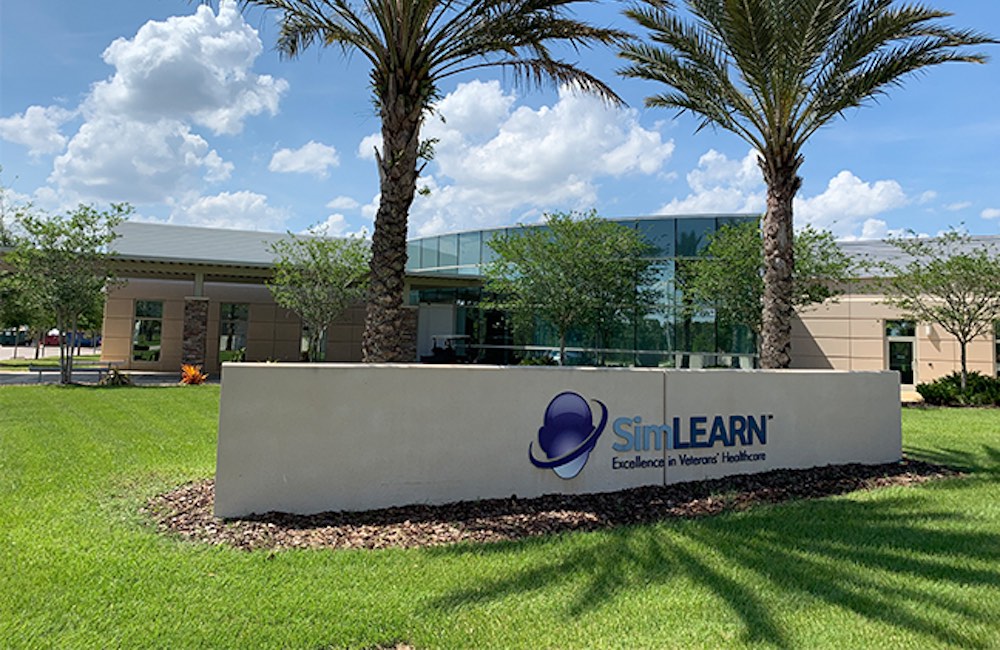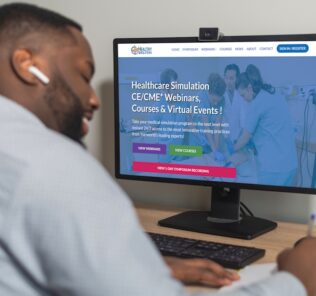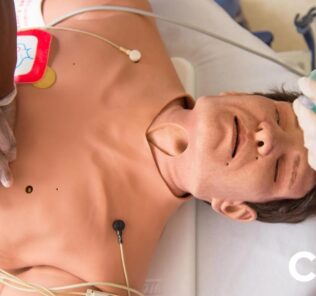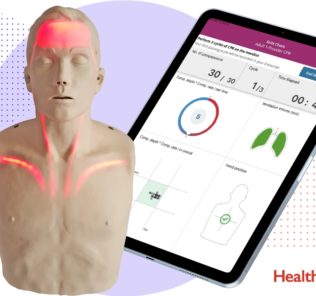VHA SimLEARN Program Uses Healthcare Simulation to Improve Veteran Care
As the use and popularity of medical simulation expands across the world, even government agencies are beginning to utilize the practice within their respective departments. Today, this can be said for the Veterans Health Administration (VHA), the largest integrated health care system in the United States. As part of the Office of Healthcare Innovation and Learning, the VHA developed a Simulation Learning, Evaluation, Assessment, and Research Network (SimLEARN) program. This HealthySimulation.com article shares an interview with Eric Bruns, MBA, the executive director of the Simulation Learning, Evaluation, Assessment and Research Network (SimLEARN), discussing the program’s mission and impact.
According to the VHA, the use of innovative technologies in a safe learning environment enhances diagnostic, procedural, and communication skills to support quality care and the best possible outcomes. That is why SimLEARN, which was founded in 2009, remains focused on improving the quality of healthcare services for America’s Veterans through the application of clinical simulation-based learning strategies to clinical workforce development.
Ultimately, the program’s mission is to set the standard for healthcare with reliable, relevant, and data-driven Simulation-based clinical education and tools, robust assessment, and research that add enterprise-wide impact and value. Further, the vision includes being an indispensable asset to the enterprise and its partners, providing world-class services to all Veterans through innovation and medical simulation education. Below is the full interview with Bruns, who is a retired career Army officer with over 25 years of valiant service to the nation where he served as an Air Defense officer responsible for the implementation of warfare simulations programs.
Sponsored Content:
Interview with SimLEARN Executive Director, Eric Bruns, MBA
HealthySimulation.com: How did you become involved in healthcare simulation?
Bruns: After serving 20+ years in the U.S. Army, I was fortunate enough to be hired as an Associate Director in the Veterans Health Administration, focusing on VA clinical education. During my time in the Army, worked with, developed, and led combat simulations for various unit levels, gaining an appreciation for the exponential value that simulation adds to education and preparedness.
My background in combat simulations coupled with my work in clinical education created a substantial foundation for working in healthcare simulation in the VA. I moved from being an Associate Director in clinical education to being the Executive director of the Simulation Learning, Evaluation, Assessment, and Research Network, or SimLEARN.
Sponsored Content:
HealthySimulation.com: How has healthcare simulation come to use in your role at the VA?
Bruns: A massive wave of innovation in healthcare has accompanied emerging health technologies across the country. We have seen changes and new capabilities rolled out each day. At the Simulation Learning, Evaluation, Assessment, and Research Network, or SimLEARN, we utilize advanced, clinical simulation to accelerate the design, development, testing, and education of these emerging technologies, best practices, and innovations in Healthcare.
We employ proactive and reactive outreach and assessment services to improve, replicate and scale Veteran access to healthcare across the entire Veteran’s Healthcare Administration. All in immersive, end-to-end environments.
HealthySimulation.com: What is the importance of healthcare simulation within the VHA?
Bruns: The proliferation of healthcare simulation-based training in an immersive environment for pilots is a great example of why simulation is important. The aviation field requires that pilots not only simulate flights prior to being licensed but do so in a completely immersive environment, where pilots execute flights in a simulator that stimulates several senses, not only sight and sound.
They are required to do so again and again and again, tens of thousands of flight hours shaping muscle memory and forming habits until all steps, skills, and reactions are second nature. The immersive environment, complete with vibrations, alarms, and resistance is so interactive, so responsive…so real…engaging the pilot so that his or her mind “knows” omitting a step would be a catastrophic mistake leading to loss of life.
Now imagine that physicians, the ones responsible for your care, the ones that will care for your aging parents, the doctor that will bring your child into the world, that VA physicians complete simulation-based education in an end-to-end immersive environment. That could lead to an exponential increase in confidence and the total patient and Veteran experience.
HealthySimulation.com: Where do you think the field of healthcare simulation and its involvement within the VA is headed?
Bruns: The accelerating rate of change in healthcare, requires that we shift the traditional training and simulation model to better suit today’s healthcare system for clinical providers, especially in the VA. Rather than looking at training or simulation as stand-alone products, the new reality for clinical education and healthcare necessitates simulation-based training in a realistic, immersive environment. Agility, remote connectivity – both technological and relational, and dynamic response are foundational principles, along with what we know is important: engagement, knowledge retention, and applicability.
A critical element to successfully meeting this new reality will be immersive technology including virtual and augmented reality. At SimLEARN, we have already begun to reimagine learning as we shifted our training paradigm from bringing clinicians to the National Simulation Center for face-to-face training to creating a library of virtual training on our platform, the SimLEARN Virtual Academy, and distributing education products through a network of simulation personnel throughout VHA facilities.
This network of “simulationists” creates environments and scenarios for clinicians to test their understanding and depth of knowledge of care, allowing clinicians and staff to try innovative and novel approaches to healthcare delivery in a safe but realistic setting, to ensure clinicians and staff are prepared.
HealthySimulation.com: What would you stress about the importance of healthcare simulation overall?
Bruns: I would emphasize that practicing the way we live and training the way we fight prepares us for potential situations. Technology has and continues to improve simulation production. In healthcare, because we have so many simulation advancements, no clinician should ever have to perform a procedure or use new technology on a patient without having done so in an immersive, simulated environment.
HealthySimulation.com: How do you plan to expand the role of healthcare simulation across VA-use?
Bruns: One of SimLEARN’s major objectives is to ensure that our clinical staff is ready and able to deploy emerging technologies and transformational care models. We are uniquely positioned to validate new equipment or processes, engage the clinical staff, and train learners, ensuring these emerging technologies are the right fit for our Veterans and the Agency as a whole.
SimLEARN’s SimVET, which stands for Simulation, validation, evaluation and testing, is a reproducible process for vetting healthcare solutions with frontline staff running clinical workflows through a fully capable simulated Medical Center. SimVET will produce a “Consumer Reports” style analysis of healthcare solutions such as software, equipment, and medical devices providing pros and cons, relevant comparisons, unique advantages, patient safety risks, and end-user recommendations. We’re excited to launch this impactful service to support the entire VA enterprise.
HealthySimulation.com: What do you find most interesting about healthcare simulation?
Bruns: The many facets of healthcare simulation are what’s most interesting to me. From realistic mannequins to augmented reality to immersive virtual reality environments, the possibilities are endless. And simulation can be used to train clinicians or to treat patients. In the area of pain management, patients have commented that they “forgot about their pain while wearing the goggles” during virtual reality sessions. This not only allowed them to extend their range of motion during therapy but opened the patients’ minds to trying new therapies.
Learn More About SimLEARN
The SimLEARN program’s operations and management are aligned with the VHA Office of Healthcare, Innovation and Learning (14HIL) in close collaboration with Office of Nursing Services (ONS).
Lance Baily, BA, EMT-B, is the Founder & CEO of HealthySimulation.com, which he started while serving as the Director of the Nevada System of Higher Education’s Clinical Simulation Center of Las Vegas back in 2010. Lance is also the Founder and acting Advisor to the Board of SimGHOSTS.org, the world’s only non-profit organization dedicated to supporting professionals operating healthcare simulation technologies. His co-edited Book: “Comprehensive Healthcare Simulation: Operations, Technology, and Innovative Practice” is cited as a key source for professional certification in the industry. Lance’s background also includes serving as a Simulation Technology Specialist for the LA Community College District, EMS fire fighting, Hollywood movie production, rescue diving, and global travel. He and his wife Abigail Baily, PhD live in Las Vegas, Nevada with their two amazing daughters.
Sponsored Content:


















